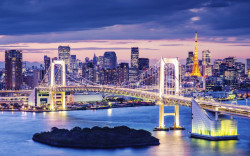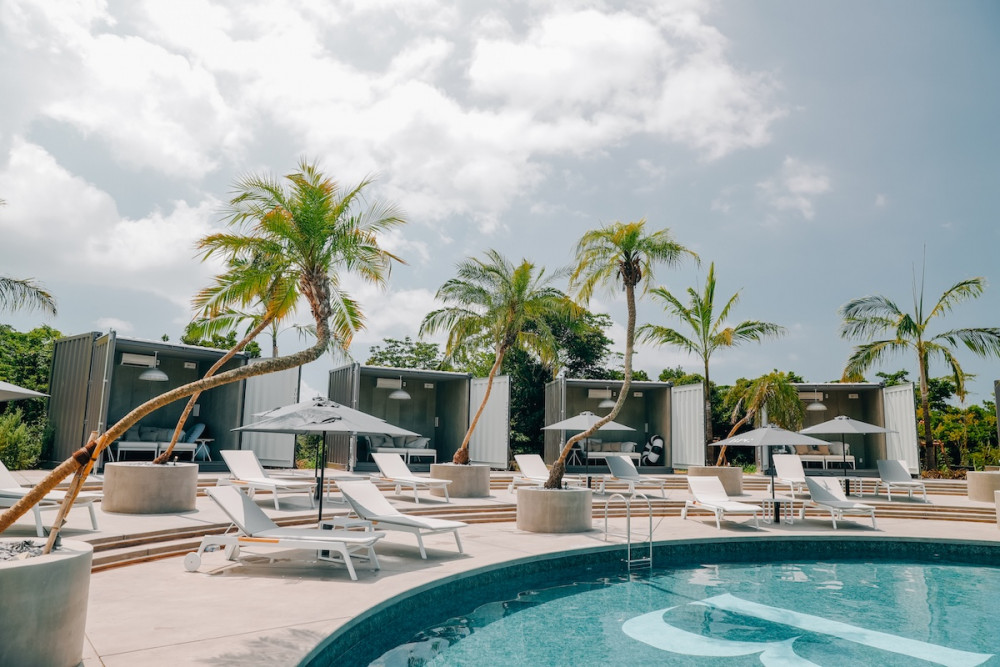
November 21, 2024
Why Southern Chiba Has Become the Perfect Getaway From Tokyo
"Micro-Tourism" Trend Puts the Spotlight on Chiba
Chiba is not exactly a hidden gem. While some travel influencers might be tempted to call it that—it’s already a well-loved escape for locals. For centuries, Tokyoites (or Edoites) have flocked there, drawn by its history, nature and seaside charm, all conveniently close to the metropolis.
Today, Chiba is gaining even more attention, particularly Southern Chiba, commonly known as Boso—the name of the peninsula where Chiba is located. This article explores the attractions of the Boso region and offers recommendations on what to do, along with a vision for Southern Chiba’s tourism future.
Why People Visit Chiba… But Usually Only the North
Chiba is not short of attractions. Shinshoji Temple, founded in 940 AD in Narita, has reigned as Japan’s most-visited temple for decades. Tokyo Disney Resort—despite the name—is also in Chiba, meaning countless visitors have set foot in the prefecture without realizing it. Chiba’s culinary scene is equally impressive as Japan’s center for both fishing and soy sauce production. It’s home to Choshi Fishing Port, where the nation’s largest fish hauls arrive, and is also Japan’s top soy sauce producer—Kikkoman, founded in 1603, began its legacy here.
However, you’ll notice that these attractions are all in Northern Chiba. Despite Southern Chiba having its own long-standing sites, many visitors tend to focus on the northern half of the prefecture. This often comes down to factors like distance and transportation options.
Undersea Tunnel Connects Southern Chiba and the Metropolis
Opened in 1997, the Tokyo Bay Aqua-Line has transformed travel to the Boso area of Chiba. This innovative “half-underwater, half-above-water” highway is so efficient, it made reaching Southern Chiba quicker than traditional land routes to Northern Chiba.
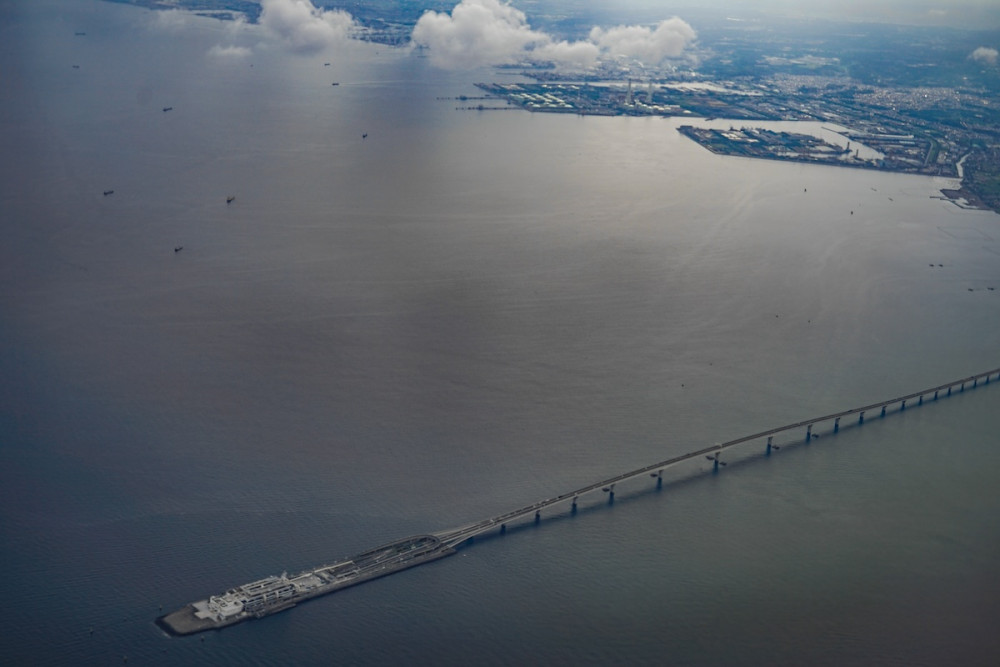

The Aqua-Line itself is an attraction, offering stunning views and a unique driving experience. Although it has been operational for some time, its establishment laid the groundwork for the development of the Boso area by improving connectivity to Tokyo. Initially, only about 120,000 cars passed through daily, but the opening of the large-scale Kisarazu Outlet Mall in 2012 more than tripled that figure. By 2017, over 1.8 million cars were traversing this vital route.
Along the route, visitors can stop at Umihotaru, an observatory deck on the water. This rest area is fully equipped with cafes, restaurants, shops and even a foot bath.
Nakajima, Kisarazu, Chiba 292-0008
BOTANICAL POOL CLUB
BOTANICAL POOL CLUB stands at the forefront of luxury travel in Chiba, offering an exceptional escape for visitors. Its stylish all-season pools are undoubtedly a highlight, but the resort’s saunas draw young wellness-seekers as sauna culture experiences a revival in Japan. With tropical fauna and flora carefully curated by a professional plant collector, the resort takes full advantage of Southern Chiba’s relatively mild climate. Dining here showcases the best of Chiba’s renowned agriculture, using fresh, locally sourced ingredients from the nation’s most self-sustaining prefecture.

Since its opening in 2023, BOTANICAL POOL CLUB has already become a hotspot for locals and travelers alike, attracting attention from creative industries and fashion circles, with rave reviews from Vogue, WWD and Elle.
Now, a growing number of secluded and exclusive retreats are opening in Southern Chiba, offering wellness-centered amenities such as saunas and onsens. BOTANICAL POOL CLUB exemplifies a new chapter for Chiba tourism, leading the region’s evolution into a high-end destination.

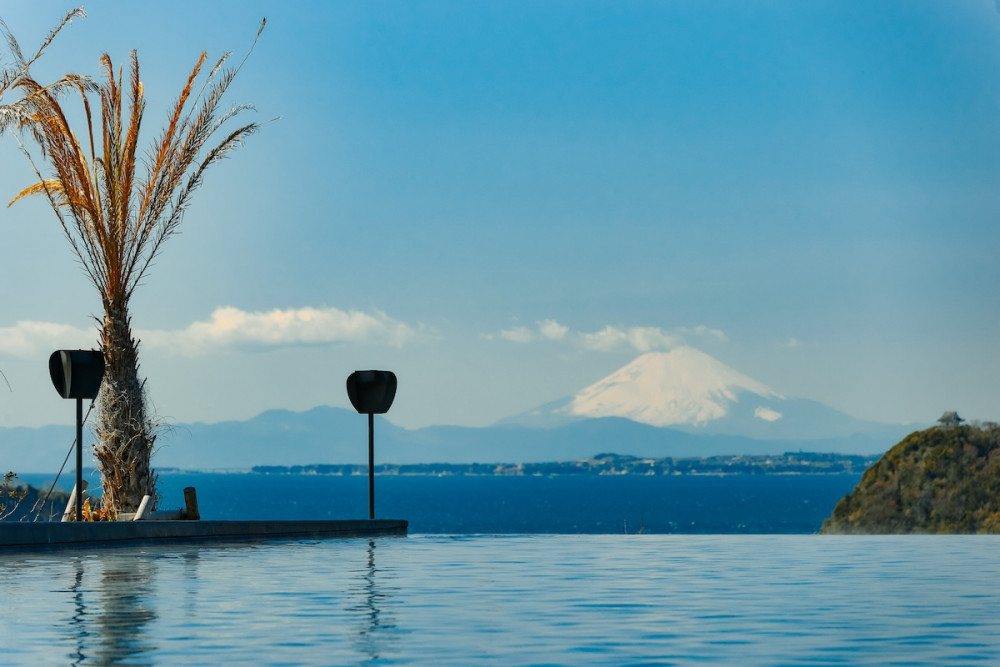
1510-2 Shimosakuma, Kyonan, Awa District, Chiba
Discover more about BOTANICAL POOL CLUB by reading the full article here.
Until March 31, 2025, the club offers “HOT POOL” experiences, with water temperatures around 40°C, making it perfect for winter! Along with the cozy warm pools, the club is also hosting a New Year’s countdown party. Check the details here.
MUJI’s Regeneration Projects in Chiba
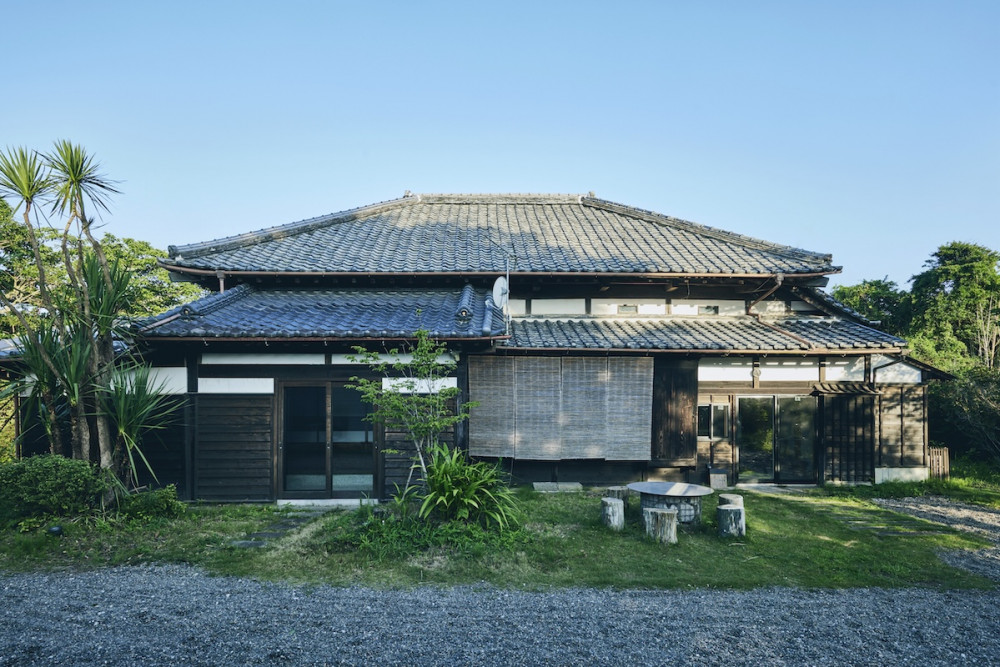
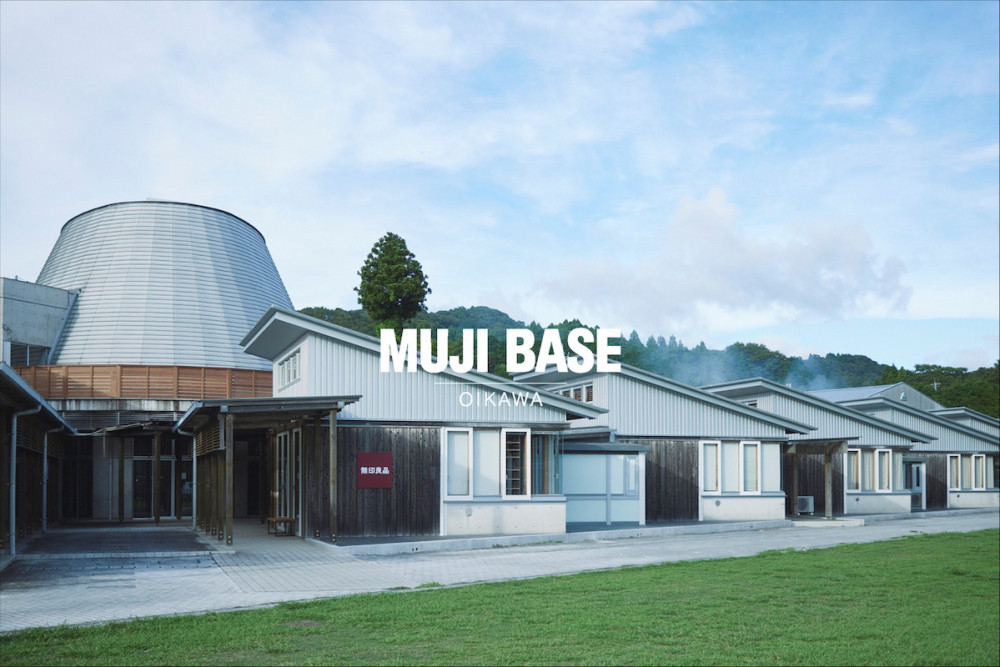
World-renowned lifestyle brand MUJI has contributed to Southern Chiba’s appeal through its regeneration projects. In October 2024, MUJI BASE OIKAWA opened, repurposing a former elementary school into a unique accommodation that blends community engagement with minimalist design. Similarly, MUJI BASE KAMOGAWA, launched in 2023, transformed a century-old Japanese house into a modern hotel.
MUJI BASE OIKAWA includes co-working spaces and a library for staycations and work-ations, as well as workshops like soy sauce-making and beekeeping that connect visitors with the local community. Located near traditional terraced rice fields, MUJI BASE KAMOGAWA offers views that have remained unchanged for centuries and visitors can connect with the local agricultural scene by visiting melon fields and dairy farms.
These projects not only tap into Japan’s retro trend but also emphasize sustainability by preserving and repurposing existing structures.
Kotadai, Otaki Town, Chiba
Ohata, Kamogawa City, Chiba
Chiba’s Roadside Stations (Michi-No-Eki)
Michi-No-Eki, Japan’s government-designated roadside stations, were introduced in the mid-1990s to enrich road travel with regional experiences. These stops offer local food, fresh produce, regional crafts and experiences. With a whopping 30 stations scattered across Chiba, the prefecture provides perfect routes for scenic drives.

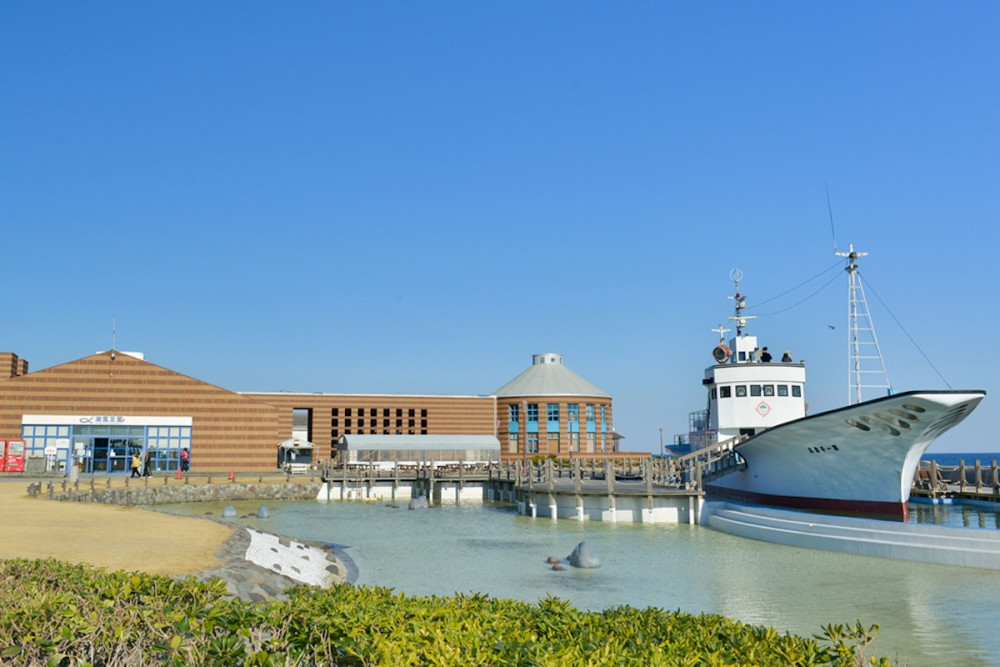
A standout among them is Roadside Station Hota Elementary School, a repurposed school building that brings together nostalgia and local pride. This station is especially popular for its community-driven vibe, with locals offering fresh produce, handmade crafts and delicious seasonal fare. The station’s open layout allows visitors to explore classrooms filled with local goods, turning the nostalgic setting into an immersive experience. Also notable is Roadside Station Chikura Seabreeze Kingdom, offering fresh seafood and beach views.
・Roadside Station Hota Elementary School
724 Hota, Kyonan Town, Awa-gun 299-1902
・Roadside Station Chikura Seabreeze Kingdom
Chikuracho Senda, Minamiboso, Chiba 295-002
Viral Ghibli-esque Spots in Southern Chiba
Another surge of tourism was fueled by internet trends, mainly on Instagram and TikTok. The tagline “Ghibli-esque” has become especially popular, making destinations like Jiufen in Taiwan and Colmar in France go viral. Whimsical townscapes, nature reclaiming human-made structures and an overall sense of nostalgia—what we think of as Ghibli-esque encompass a wide range of aesthetics. Japan, too, has seen this trend and, coincidentally, many of these now-viral destinations are in Southern Chiba.
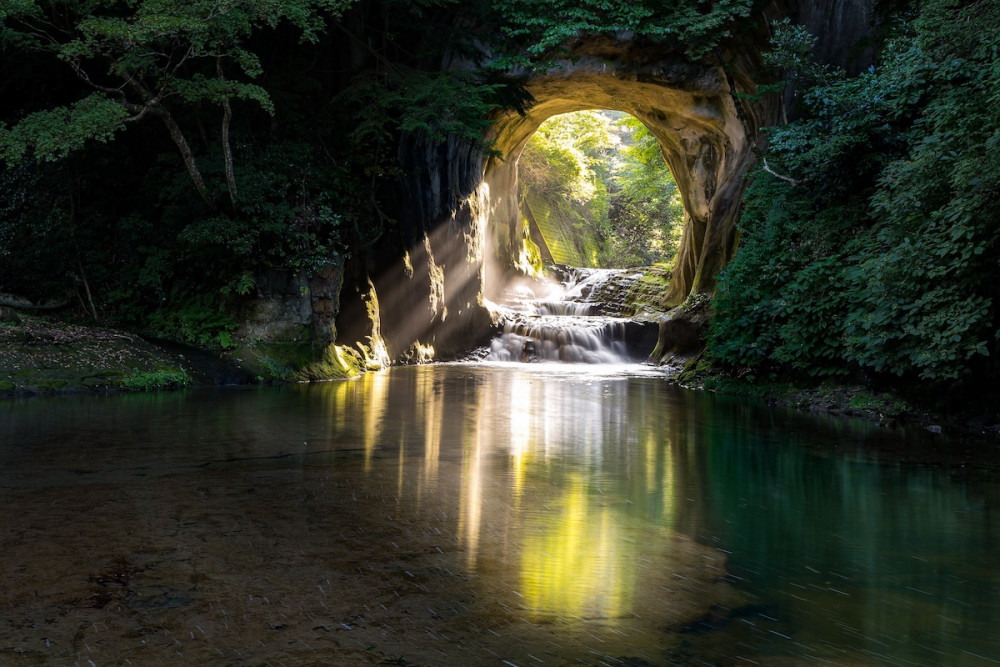
Kameiwa Cave, dug nearly 400 years ago as a waterway, is a prime example of this. In the early morning, sunlight filters through the cave, creating a scene reminiscent of Princess Mononoke’s godly forests
The Kominato Train winds through countryside scenes straight out of My Neighbor Totoro, with one station even featuring a painting of Totoro himself.
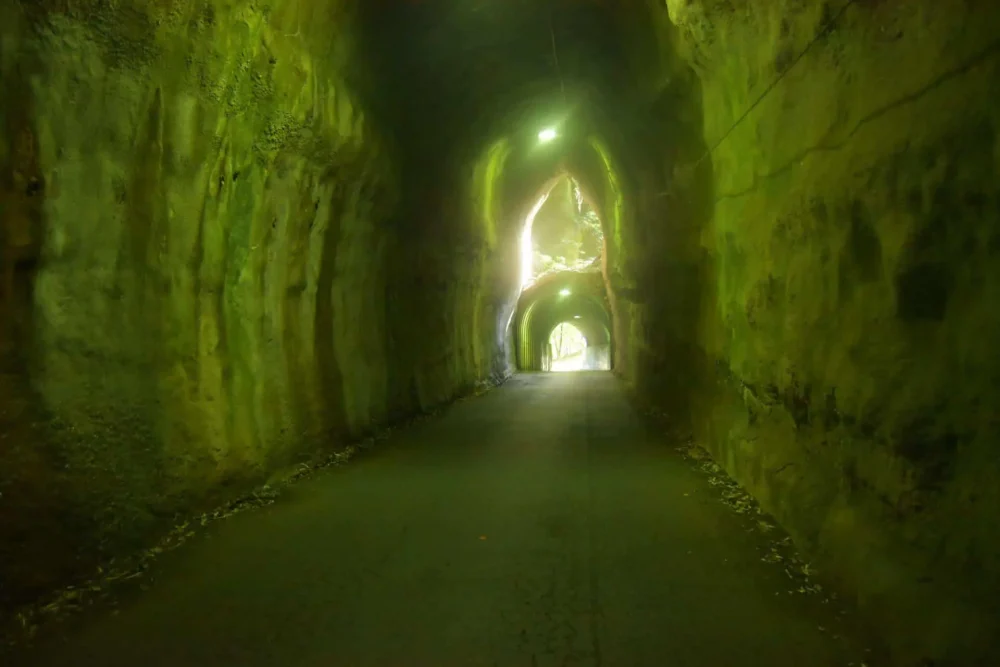
(credit: Visit Chiba)
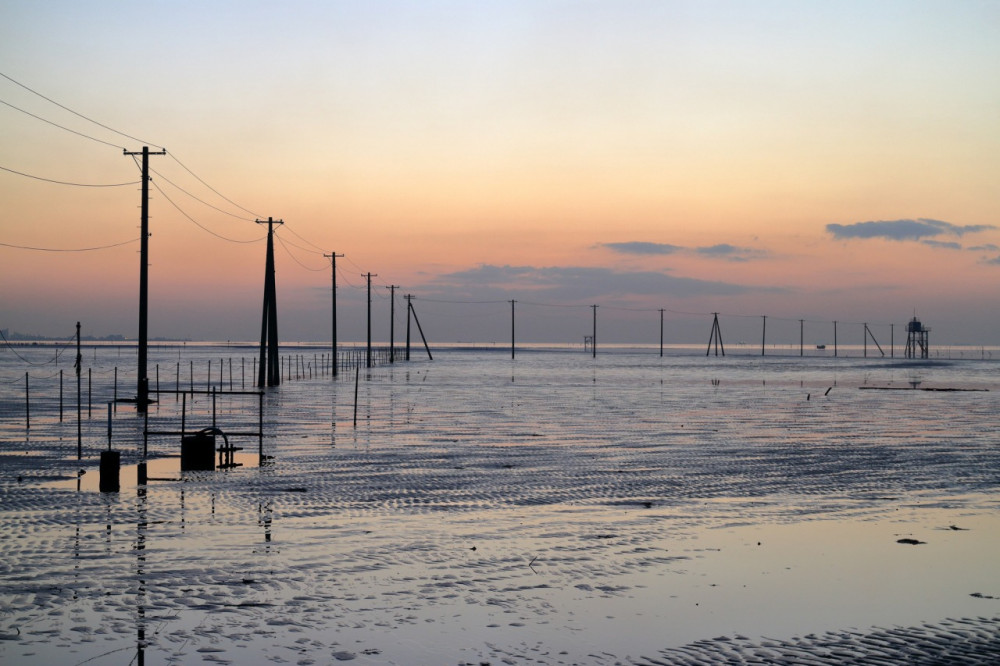
Tsukisaki Tunnel, Mukaiyama Tunnel and Kyoei Tunnel’s overgrown greenery and mysterious paths feel like portals to another world, while Kuzuma Beach, with its electricity pole stretching toward the horizon, creates an ethereal yet haunting scene—just like Spirited Away.
Many of these spots aren’t new, but the internet has helped rediscover their charm, shining a spotlight on places that might otherwise be overlooked.
Chiba Leads the Micro Tourism Trend of Japan
“Micro tourism” is a concept introduced by the CEO of Japan’s leading hospitality company, Hoshino Resort, during the COVID-19 pandemic. The idea is simple: instead of rushing to distant destinations, take the time to explore places just an hour or two from home. It was initially popularized during the pandemic as a way to reduce travel across borders and prevent clusters.
Today this concept has evolved into a sustainability-focused trend, now centered on small-scale, community-based tourism experiences perfect for weekend getaways. Chiba is leading this trend, thanks to its proximity to Tokyo and its multifaceted appeal, making it the perfect destination for a more relaxed travel experience.
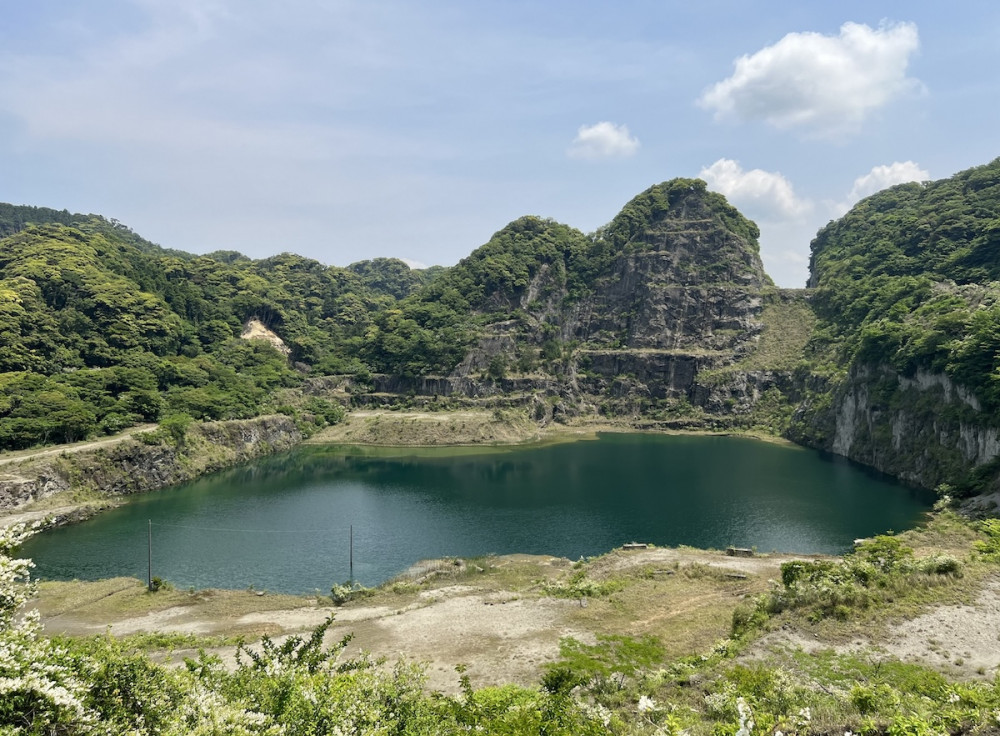

Related Articles:
This Kyoto Bar is a “Sound Forest” Filled with Ambient Music and Exotic Plants
